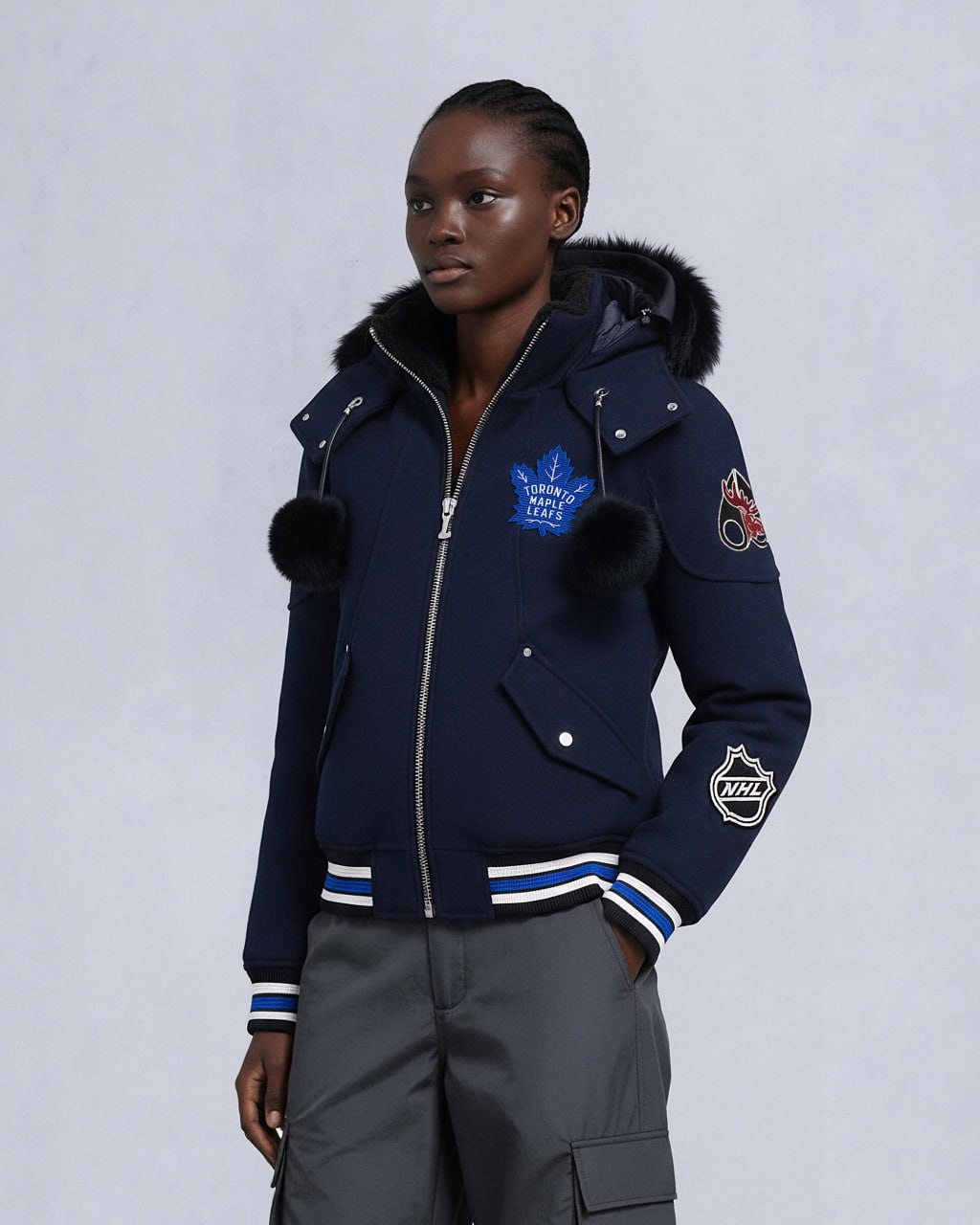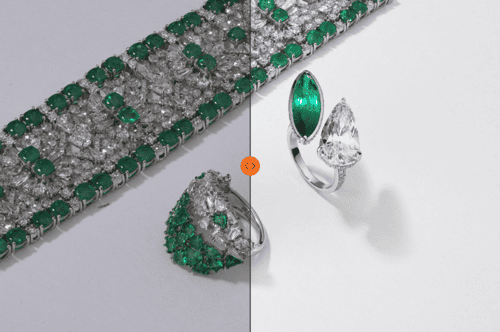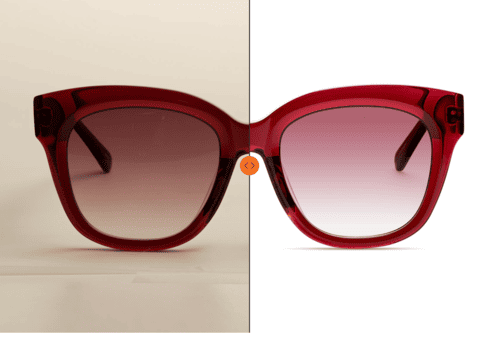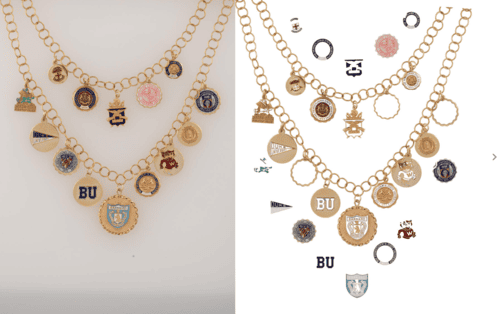Ultimate Guide to Visual Marketing Strategy for E-Commerce Business
Visual marketing has emerged as a pivotal strategy for eCommerce businesses seeking to capture consumer attention and drive sales. With so much information floating around online, brands need eye-catching visuals to grab the consumer's attention and convey the brand’s message across, because images sell way better than words, especially on the internet. This article delves into the intricacies of visual marketing, its significance in eCommerce, and how business owners can harness its power to enhance their brand identity and boost conversion rates.
Visual marketing is the strategic use of images, videos, infographics, and other visual content to convey messages, promote brands, and engage audiences. It plays a crucial role in eCommerce by appealing to consumers inherent preference for visual information. Research indicates that humans process visuals 60,000 times faster than text and are more likely to remember information presented visually. This ability to quickly capture attention is essential in an era where consumer attention spans are dwindling.
The significance of visual marketing extends beyond mere aesthetics; it directly impacts consumer behavior and conversion rates. For instance, studies show that 84% of consumers are convinced to purchase after watching a product video. As such, integrating visual content into marketing strategies is not just beneficial but essential for driving sales in the competitive eCommerce landscape.

Understanding Visual Marketing in eCommerce
Effective visual marketing can significantly enhance user experience, build brand trust, and ultimately drive conversions in an environment where online shoppers are bombarded with information. This section explores the various facets of visual marketing in eCommerce, its impact on consumer behavior, and how businesses can leverage it to optimize their online presence.
How Visual Content Influences Trust and Purchasing Decisions
Visual content plays a vital role in establishing trust with potential customers. High-quality product images and engaging videos allow consumers to scrutinize product details, essential for building confidence in their purchasing decisions. Research indicates that 67% of consumers consider image quality crucial when selecting products online. When shoppers can see products from multiple angles or in lifestyle contexts, they are more likely to feel assured about their choices.
Moreover, incorporating user-generated content (UGC) into visual marketing strategies can further enhance trust. Consumers today prefer authentic representations of products over polished advertisements. Showcasing real customers using products can create a sense of community and relatability, making it easier for potential buyers to envision themselves using the product.
Key Components of Visual Marketing Strategy and their Definitions
A comprehensive understanding of visual marketing encompasses foundational elements that drive successful strategies in eCommerce. The key components include:
- Brand DNA: The essence of a brand — its values, mission, and unique selling propositions — forms the core of visual marketing. Understanding your brand's DNA is crucial for creating visuals that resonate with your identity and effectively communicate your message. For instance, a luxury brand will employ visuals that convey exclusivity and sophistication, while a sustainable brand may focus on natural imagery and eco-friendly aesthetics.
- Deep Target Audience Research: Knowing your audience is paramount in visual marketing. Conducting thorough research to understand the demographics, preferences, and behaviors of your target market allows you to tailor your visuals accordingly. For example, some audiences may respond better to vibrant colors and dynamic videos on platforms like TikTok, while other demographics might prefer more traditional aesthetics on Facebook or email campaigns.
- Strategic Choice of Visual Marketing Channels: Different platforms have distinct characteristics and user expectations that influence how visuals should be crafted. Selecting the right channels for distributing visual content is essential for maximizing target audience reach and engagement.
- Compelling Visuals According to Visual Content Strategy: Creating compelling visuals involves a strategic approach that aligns with your overall marketing goals. This includes developing a visual content strategy that defines how different types of visuals can be used to tell your brand story and drive conversions.
These components work together to create a cohesive visual marketing that enhances the overall strategy.
The Role of Branding, Aesthetics, and Consistency
A strong visual identity is essential for effective branding in eCommerce. Consistency in aesthetics, such as color schemes, typography, and imagery, across all platforms helps reinforce brand recognition and loyalty. For instance, colors can evoke specific emotions; blue often conveys trust while yellow promotes optimism. Brands that maintain consistent visual themes can increase familiarity by up to 80%.
Moreover, aesthetics play a significant role in user experience. A well-designed website with organized product categories and appealing visuals can enhance navigation and encourage longer browsing times. This not only keeps customers engaged but also increases the likelihood of conversions.
How Visual Marketing Aligns with Overall Marketing Strategy
Visual marketing is not just an isolated tactic; it is a vital component of a broader marketing strategy that adheres to the same foundational principles as traditional marketing. This includes understanding the customer journey through funnels, leveraging the 4Ps of marketing (Product, Price, Place, Promotion), and recognizing that visuals serve as primary communicative tools. The key distinction of visual marketing lies in its focus on imagery as both a means of communication and a product in itself. In online shopping, consumers are essentially purchasing the visual representation of a product, making it imperative for businesses to optimize their visual content.
Visual marketing should be integrated into overall marketing strategies to maximize its effectiveness. By aligning visuals with brand messaging across different channels, such as social media, email campaigns, and website content, businesses can create a unified brand experience. This coherence helps reinforce brand values and ensures that consumers receive consistent messaging regardless of the platform they engage with.
Additionally, leveraging data analytics can inform visual marketing strategies by identifying which types of visuals resonate most with target audiences. Understanding consumer preferences allows businesses to tailor their visual content effectively, enhancing engagement and driving sales.
Building a Strong Visual Brand Identity
Defining Your Brand’s DNA
Defining your brand's DNA is a foundational step in building a strong visual brand identity and an effective marketing strategy. Brand DNA encapsulates the unique characteristics and attributes that differentiate your brand in the marketplace. It serves as the essence of what your brand stands for, guiding everything from product development to marketing communications.
Brand DNA refers to the core elements that define a brand's identity, including its purpose, vision, values, personality, positioning, and visual identity. Just as human DNA contains the genetic information that determines individual traits, brand DNA encompasses the qualities that shape a brand's character and influence consumer perception. Understanding and articulating your brand's DNA is crucial for establishing a strong connection with your target audience and achieving long-term success. Uncovering your brand's DNA requires introspection and research. Here are some steps to help you get started:
- Define Your Purpose: Reflect on why your brand exists beyond profit-making. Identify core values and the impact you want to create in the world.
- Understand Your Target Audience: Conduct thorough research to gain insights into your audience’s needs, desires, and aspirations. This alignment will help connect your brand more deeply with consumers.
- Conduct a Brand Audit: Evaluate your current positioning, visual identity, messaging, and customer experience to identify gaps or inconsistencies.
- Identify Your Unique Value Proposition: Determine what sets your brand apart from competitors by identifying unique benefits you offer to your audience.
- Craft Your Brand Story: Develop a compelling narrative that effectively communicates your brand DNA while resonating with your target audience emotionally.
Creating a Cohesive Look Across All Platforms (Website, Social Media, Ads, Packaging)
Brand consistency refers to the uniformity of visual and verbal elements across all platforms. This includes logos, photography and videography styles, color schemes, typography, messaging, and overall design aesthetics. Key strategies for creating a cohesive look:
- Establishing clear brand guidelines is the first step toward maintaining consistency. These guidelines should outline how your brand should be represented visually across all platforms. Hire a designer who will specify how your logo should appear in different contexts (e.g., size, placement, variations), define primary and secondary colors that represent your brand, list approved fonts for various applications, and outline the types of images that align with your brand.
- Use a unified design language. A strong visual identity is recognizable by its design language. Ensure that your design elements remain uniform across all platforms. This approach helps customers associate content with your brand instantly.
- While consistency is key, it’s essential to adapt your messaging to fit the unique characteristics of each platform.
- Maintain a centralized repository for all brand materials to ensure that everyone on your team has access to the latest resources. This reduces the risk of using outdated or inconsistent materials and streamlines the process of creating new content.
- Brand consistency is an ongoing process that requires regular monitoring and adjustments. Continually assess how your brand is perceived across different platforms by gathering feedback and analyzing performance metrics. This allows you to identify areas for improvement and adapt strategies as needed to maintain a cohesive presence.
- Educate team members about the importance of brand consistency and provide them with the necessary resources to uphold it. Ensure they understand the brand guidelines and have the skills to implement them consistently across their respective roles.
Examples of Successful eCommerce Brands with Strong Visual Identities
Loulou Studio Founded by Chloé Harrouche in Paris, Loulou Studio focuses on chic sophistication with a minimalist aesthetic. The brand's visual identity is characterized by relaxed yet stylish essentials that reflect city life. Loulou Studio maintains a consistent look across its website and social media, showcasing its collection of elevated basics through clean, elegant photography that emphasizes simplicity and wearability. |  |

| Dries Van Noten Dries Van Noten is celebrated for its artistic prints and eclectic designs, merging traditional craftsmanship with modern aesthetics. The brand’s visual identity is vibrant and expressive, appealing to those who appreciate unique fashion statements. Van Noten’s collections are showcased through visually stunning campaigns that highlight the intricate details of each piece, creating a strong narrative around the brand’s identity across various platforms |
Maison Margiela Maison Margiela is renowned for its avant-garde designs and deconstructed aesthetics. The brand challenges conventional fashion norms while maintaining a distinct visual identity that speaks to creativity and innovation. Margiela's campaigns often feature conceptual art direction that aligns with the brand's ethos, creating a cohesive experience that captivates audiences both online and offline. | 
|
What Are the Main Visual Marketing Distribution Channels?
To effectively reach and resonate with audiences, businesses must utilize a variety of distribution channels that leverage visual content. Here are the main visual marketing distribution channels that brands should focus on.
Website & Product Pages – Creating visually engaging product listings
Your website serves as the primary hub for visual marketing, where high-quality images, videos, and engaging layouts can significantly enhance user experience.
Optimize product pages with visually appealing images from multiple angles, lifestyle shots, and videos that demonstrate product features. Incorporate interactive elements like 360-degree views to allow customers to explore products in detail.
Social Media Platforms – Instagram, Facebook, Youtube, Pinterest, TikTok, and LinkedIn
When developing a visual marketing strategy, it's crucial to understand the distinct characteristics of each social media platform.
Visual social media platforms like Instagram and Pinterest prioritize aesthetic appeal, with Instagram focusing on high-quality images and engaging formats such as Stories and Reels, while Pinterest acts as a visual discovery engine that inspires users through vertical images and aspirational visuals.
TikTok and YouTube cater to video content, with TikTok emphasizing short, dynamic videos that prioritize authenticity and entertainment, whereas YouTube is designed for longer-form storytelling, allowing brands to create in-depth content like tutorials and interviews.
Additionally, Facebook stands out as a platform where textual elements are more prominent, supporting community engagement through likes, comments, and shares, along with diverse advertising options.
Navigating these different channels can be challenging, but understanding their unique requirements is essential for success. To help you develop a cohesive strategy across all platforms, explore our comprehensive guide on multichannel visual marketing strategies here.
Email Marketing – Using Visuals to Boost Open Rates and Conversions
Email marketing provides a direct line to consumers, allowing brands to deliver personalized visual content. Incorporate eye-catching visuals in newsletters and promotional emails to boost open rates and engagement. Use GIFs or short videos to create dynamic content that captures attention.
Paid Advertising – Crafting Compelling Visual Ads for Google, Facebook, and Instagram
Google Ads, Facebook Ads, Instagram Ads, and YouTube Ads are powerful channels for visual marketing, each with unique strengths. Google Ads targets users actively searching for products or services by displaying eye-catching visuals on search results and across the Google Display Network, making relevance to keywords crucial for engagement.
Meanwhile, Meta Ads for Facebook and Instagram offer versatile ad formats, such as carousel ads, which allow brands to showcase multiple products or features in a single engaging format. Utilizing Meta's automatic optimization can further improve ad performance by arranging cards based on user engagement.
Overall, creating visually compelling ads that capture attention quickly is essential across these platforms.
Marketplaces (Amazon, Etsy, etc.) – Optimizing Visuals for Third-Party eCommerce Platforms
Marketplaces serve as vital distribution channels for reaching a broader audience. Optimize product visuals on these platforms by using high-quality images that comply with marketplace standards. Maintain consistency in branding across all listings to enhance recognition.
Leveraging marketplaces effectively requires a strong focus on visual marketing strategies tailored to each platform's unique characteristics. High-quality product images, engaging descriptions, SEO optimization, and integration with social media are essential components for success. To understand the specific dynamics of each marketplace and utilize visual content strategically, read our article.
Types of Visual Content for eCommerce Marketing
Here’s a deeper look at key categories of visual content that can enhance your eCommerce marketing strategy.
A. eCommerce Photography
- High-Quality Product Images: Crisp, clear, and high-resolution images that accurately represent the product help build consumer trust and reduce uncertainty, increasing the likelihood of purchase.

Still Life Photography: This style uses props and thoughtful arrangements to create artistic compositions that tell a story and evoke emotions, making it ideal for branding.

- On Model Photography: Showcases products worn or used by models, allowing consumers to visualize how items fit into their lives, particularly effective for clothing and accessories.

- Lifestyle Photography: Contextualizes products in real-life scenarios, engaging consumers by helping them imagine using the product in their daily lives, fostering emotional connections.

B. Video Content
The rise of video content has transformed eCommerce marketing strategies, providing dynamic ways to engage consumers. Types of videos may include:
Product Demos: Videos showcasing features and functionalities in action. It helps consumers understand how to use the product effectively, addressing potential concerns about usability and demonstrating value.
Tutorials: Educational videos that guide consumers on how to use or style products. It adds value by providing helpful information, which can enhance customer satisfaction and loyalty.
Behind-the-Scenes Content: Videos that offer insights into the brand’s processes or culture. It builds transparency and authenticity, allowing consumers to connect with the brand on a personal level.
Short Video: Short videos designed specifically for platforms like Instagram and TikTok. Engaging video content can capture attention quickly and drive higher interaction rates compared to static images.
For more detailed insights into product video, you can explore our article: Maximizing eCommerce Businesses Sales with Product Videos
C. Social Media Visual Content and Ads
Crafting Attention-Grabbing Visuals
Picture this: You’re scrolling through Instagram, and boom — a vibrant, eye-catching post makes you pause. That’s the power of great visuals. To pull this off, start with brand colors, contrast, and a strong message. But don’t overdo the text — social media is a visual playground. Stick to minimal words (like Instagram’s old 20% text rule for ads) and let the image or video do the talking.
Consistency is key. Slap your logo in the corner, use your brand fonts, and stick to your color palette. Even if someone scrolls past, they’ll subconsciously recognize your brand next time. And here’s the secret sauce: emotion. Use faces and relatable scenarios, or even memes. People connect with people, not products.
Designing High-Converting Ads
Ads job is to answer the viewer’s question: “Why should I care?” Lead with a clear value prop — like “Get 50% Off Today” or “Fix Your Wi-Fi in 5 Minutes.” No jargon, no fluff. Then, hit them with a strong call to action. “Swipe Up,” “Shop Now,” or “Claim Your Discount” tells them exactly what to do next.
Social proof is your best friend here. Sprinkle in testimonials, user-generated content, or an influencer holding your product. If you’re selling skincare, show a before-and-after slider. And don’t forget urgency: “24-Hour Sale” or “Last 3 Tickets Left” creates FOMO (Fear of Missing Out) that pushes people to act now.
Experiment with formats. Carousel ads on Facebook/Instagram let you showcase multiple products. Video ads? Keep them short — under 15-30 seconds. Show the product in action: someone unboxing it, using it, or laughing at its results.
A/B test everything. Try two versions of an ad — one with a blue “Buy Now” button and another with red. See which one converts better. And retarget! If someone visited your site but didn’t buy, hit them with a dynamic ad showing the exact product they eyed.
D. User-Generated Content (UGC)
User-generated content (UGC) refers to any form of content — such as images, videos, reviews, or testimonials — that is created and shared by consumers rather than brands. UGC has become an essential component of modern marketing strategies, particularly in eCommerce, due to its authenticity and ability to foster trust among potential customers.
This content is often seen as more relatable and trustworthy than traditional advertising, as it reflects genuine customer experiences.
UGC is perceived as more authentic compared to branded content. Consumers trust the opinions and experiences of their peers over marketing messages from brands. According to studies, 86% of consumers are more likely to trust a brand that shares UGC compared to one that solely relies on branded content.
How to Leverage UGC in Your Marketing Strategy?
- Encourage Sharing: Create campaigns that motivate customers to share their experiences on social media using specific hashtags or tagging your brand. Contests or giveaways can incentivize participation.
- Feature UGC on Your Platforms: Showcase user-generated content on your website, social media channels, and marketing materials. Highlighting customer photos or testimonials can create a sense of community and authenticity around your brand.
- Engage with Customers: Respond to customer posts featuring your products by liking, commenting, or sharing their content. This interaction fosters goodwill and encourages further engagement.
- Create a UGC Gallery: Dedicate a section of your website or social media profile to feature user-generated content. This not only showcases your products but also builds trust with potential customers.
- Monitor and Curate Content: Use tools to track mentions of your brand across social media platforms. Curate high-quality user-generated content that aligns with your brand values for use in marketing campaigns.
Incorporating UGC into marketing strategies not only enriches content offerings but also strengthens relationships between brands and consumers in today’s competitive digital landscape.
Optimizing Visual Content for Conversions
The Psychology of Visuals in Online Shopping
Visuals are the silent salespeople of e-commerce, leveraging subconscious triggers to convert browsers into buyers. Color psychology manipulates emotions — red and yellow create urgency (think “Limited Stock!” banners), blue builds trust (common in finance), and green signals sustainability. Amazon’s orange “Buy Now” button, for instance, balances urgency with approachability. High-quality imagery acts as a substitute for physical touch: zoomable product shots (like 360-degree views) reduce purchase anxiety by letting customers “inspect” items, while lifestyle photos trigger mental simulations of ownership.
Interactive tools like AR (IKEA’s app for visualizing furniture in your home) and product videos (Dyson’s airflow demos) tap into embodied cognition — the brain’s tendency to engage more deeply with what it can “interact” with.
Meanwhile, user-generated content (UGC) hijacks social proof. Brands like Glossier thrive by reposting customer selfies, exploiting the bandwagon effect and parasocial bonds with influencers.
Website design uses Gestalt principles to guide focus: Apple’s minimalist layouts direct attention to products with strategic whitespace, while eye-tracking studies inform placement of high-margin items in visual hotspots. Even cultural nuances matter in visuals — white may symbolize purity in one market and mourning in another.
Importance of Mobile-Friendly Visuals
We live in the thumb-scroll economy: 60% of web traffic comes from mobile devices, and users abandon sites that take longer than 3 seconds to load. Mobile-friendly visuals — compressed images, vertical videos, and responsive design — aren’t just “nice-to-have”; they’re survival tools. Example: Instagram Reels and TikTok thrive because their square/vertical formats are thumb-friendly, while cluttered desktop-style visuals get ignored.
Mobile users spend 1.7 seconds glancing at a webpage. Visuals must communicate value instantly:
- Autoplay videos (with captions for sound-off viewing) hook users fast.
- Product carousels mimic in-store browsing — ASOS uses swipeable grids to keep users engaged.
- Micro-animations (e.g., a “Add to Cart” button that pulses) exploit the brain’s bias toward movement.
Since 2018, Google’s mobile-first indexing prioritizes mobile-optimized sites. Slow-loading visuals tank SEO rankings. Fixes:
- Use WebP formats (30% smaller than JPEGs).
- Implement lazy loading to prioritize above-the-fold content.
- Test tools like Google’s PageSpeed Insights to audit image bottlenecks.
Accessibility = inclusivity (and revenue). Over 25% of users have visual impairments. Mobile-friendly design isn’t just responsive—it’s accessible:
- Alt text for images (screen readers can’t parse unlabeled visuals).
- High-contrast colors for readability in sunlight.
- Avoid tiny text overlays — Zoom’s app uses bold icons instead of words for quick navigation.
Mobile isn’t a “channel” — it’s the primary window to your audience. Brands that treat mobile visuals as an afterthought lose trust, traffic, and revenue. For a comprehensive understanding of mobile photography for e-commerce, you might find this article helpful: Mobile phone photography for E-commerce brands
Tracking and Analyzing Visual Marketing Performance to Improve Conversion Rates
1. Metrics That Matter Beyond “Likes”
Vanity metrics (e.g., impressions, shares) don’t pay the bills. Focus on:
- Click-through rate (CTR): Which hero images or thumbnails drive clicks? Dropbox increased sign-ups by 10% by A/B testing landing page visuals.
- Scroll depth: Use Hotjar to see if users engage with key visuals below the fold.
- Heatmaps: Tools like Crazy Egg reveal if users ignore your “Buy Now” button — often due to poor contrast or cluttered layouts.
- Conversion rate per asset: Track if product videos on PDPs (Product Detail Pages) outperform static images.
2. A/B Testing
Test everything.
- Image vs. video CTAs: Grammarly found video demos boosted free trial conversions by 15%.
- Background colors: HubSpot increased leads by 21% by switching CTA buttons from green to red.
- UGC vs. pro photos: Airbnb uses A/B tests to confirm that user-generated travel pics outperform staged shots.
3. Speed = Money
Slow-loading visuals kill conversions.
- Largest Contentful Paint (LCP): Google penalizes sites where images take >2.5 seconds to load. Use Squoosh to compress visuals without quality loss.
- Core Web Vital scores: Fix issues flagged by Google Search Console (e.g., oversized banners).
4. Fixing the Blind Spots
- Alt text audits: Use Screaming Frog to find unlabeled images hurting SEO and accessibility.
- Dead zones: Heatmaps showing ignored sections? Repurpose that space — Nike removed a low-engagement banner and saw a 7% cart-add increase.
5. Data Insights
Utilize tools like Google Analytics to track user behavior, traffic sources, and conversion rates. This data provides insights into which visuals drive engagement and sales. Heatmaps can reveal where users click most frequently on your site, helping identify which visual elements attract attention and which may need adjustment.
Data beats guesswork. Start with a simple framework:
1. Social Media Audit: Conducting a social media audit is essential for evaluating the effectiveness of your visual marketing efforts across platforms.: Assess strengths, weaknesses, opportunities, and threats related to your social media presence to inform future strategies.
2. Website Audit: A website audit evaluates how well your site supports marketing efforts: Assess the quality of images and videos used on product pages and throughout the site. Evaluate site navigation, loading times, mobile responsiveness, and overall design aesthetics to ensure they enhance the shopping experience.: Analyze the effectiveness of CTAs associated with visual content to determine if they drive desired actions from visitors.
3. Test: A/B test one element (e.g., video placement).
4. Scale: Apply winning variants across campaigns.
Key Takeaways for eCommerce Brands
Visual content is undeniably a driving force in visual marketing, especially for brands aiming to succeed in the competitive e-commerce landscape. High-quality visuals not only capture attention but also build trust, enhance engagement, and ultimately drive conversions. Research shows that 93% of consumers consider visuals a major factor in their purchasing decisions, highlighting the critical role that effective visual content plays in influencing buyer behavior.
For eCommerce brands, the importance of presenting products through professional-grade visuals cannot be overstated. Flawlessly crafted images and videos serve as the digital equivalent of an in-store experience, allowing potential customers to see and understand products in a way that text alone cannot achieve. This is particularly vital in an online shopping environment where tactile experiences are absent. To ensure success, brands should consider partnering with professionals who specialize in visual content creation. LenFlash Studio, a leading commercial photography and videography studio, offers expertise in producing high-quality visuals tailored to eCommerce needs.
To delve into effective visual marketing strategies for different niches, consider reading the following articles:















